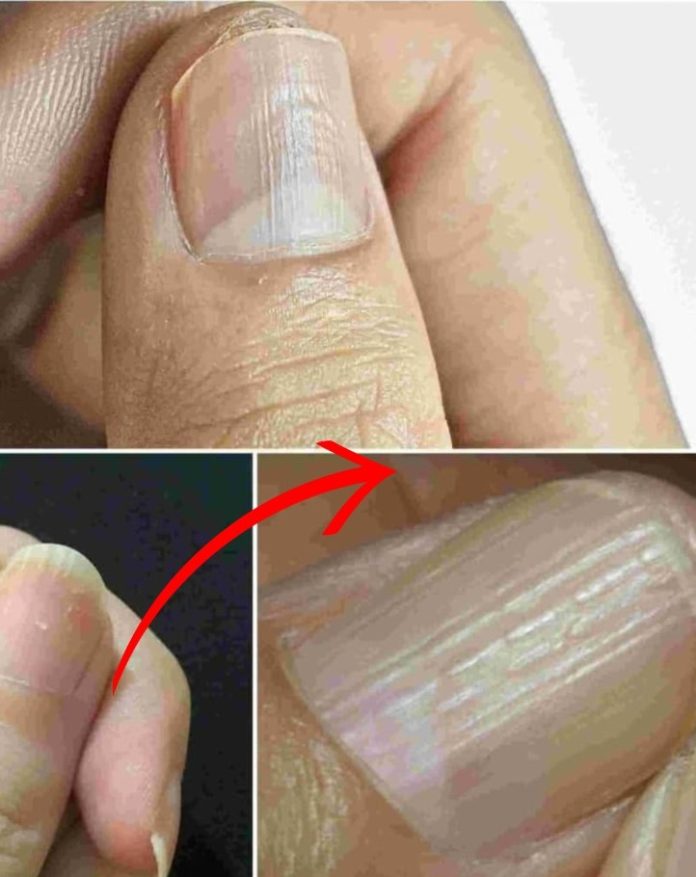Nails can be a fascinating reflection of our overall health, often revealing insights that go beyond mere aesthetics. While we typically admire our manicures or fret over chips and breaks, the lines that appear on our nails can tell a much deeper story.
These lines can indicate various health conditions, nutritional deficiencies, or even the effects of aging. In this exploration, we’ll uncover the different types of nail lines, what they signify, and how you can address them to maintain healthy, beautiful nails.
Types of Nail Lines and Their Meanings
1. Longitudinal Lines
These lines run vertically down the length of the nail. While often harmless, pronounced longitudinal lines can indicate nutritional deficiencies, particularly in proteins or vitamins. Conditions such as eczema or psoriasis can also lead to the appearance of these lines, which may signal underlying skin issues.
2. Transverse Lines (Beau’s Lines)
Transverse lines cross the nail horizontally. They often appear as a result of trauma, illness, or significant stress to the body. Conditions like severe infections, high fevers, or surgeries can cause these lines to manifest. If you notice Beau’s lines, it may be time to reflect on recent health changes or consult a healthcare professional.
3. Pitting
Pitting involves small indentations on the nail surface, often associated with conditions like psoriasis or alopecia areata. While pitting itself is not harmful, it can indicate that your body is experiencing immune system challenges. If you notice persistent pitting, seeking medical advice can help determine any underlying issues.
4. Color Changes
Though not lines per se, changes in nail color can also be significant. Yellowing nails might indicate fungal infections or other health issues, while a bluish tint could signal circulation problems. Keeping an eye on color changes can be crucial for your health.
Factors Contributing to Nail Lines
Several factors can contribute to the appearance of lines on your nails:
- Aging: As we age, our bodies undergo changes that can affect our nails. This can lead to the development of ridges or lines.
- Nutrition: A diet lacking in essential vitamins and minerals can directly impact nail health. Biotin, zinc, and iron are particularly important for maintaining strong, healthy nails.
- Health Conditions: Certain health issues, such as thyroid disorders or autoimmune diseases, can manifest through changes in your nails. Regular check-ups can help identify these conditions early.
- Trauma and Stress: Physical injury to the nail or significant emotional stress can lead to temporary changes in nail texture and appearance.
Caring for Your Nails
To maintain healthy nails and minimize the appearance of lines, consider the following tips:
1. Maintain a Balanced Diet
Ensure your diet is rich in vitamins and minerals. Foods high in biotin, such as eggs, nuts, and leafy greens, can promote nail health. Additionally, incorporating lean proteins and healthy fats can contribute to stronger nails.
2. Hydrate
Just like your skin, your nails need moisture. Keep yourself hydrated and consider using a cuticle oil to nourish your nails and surrounding skin.
3. Protect Your Nails
When engaging in activities that could damage your nails, wear gloves. This is especially important when using cleaning products or doing gardening.
4. Limit Nail Products
Frequent use of nail polish and remover can weaken nails. Try to give your nails breaks between manicures to allow them to breathe and recover.
5. Regular Check-Ups
If you notice persistent lines or changes in your nails, consult a healthcare provider. They can help assess whether these changes are a sign of a more significant health issue.
Conclusion :
Lines on your nails can be more than just a cosmetic concern; they are a window into your health. By understanding the different types of lines and their potential meanings, you can take proactive steps to improve your nail health. Remember, while some changes may be benign, others can indicate underlying health conditions that warrant attention.
Embrace your nails as a vital part of your overall wellness, and give them the care they deserve. With a little effort and awareness, you can enjoy strong, beautiful nails that reflect your vibrant health.
Source of the picture : Barbara O’Neill










